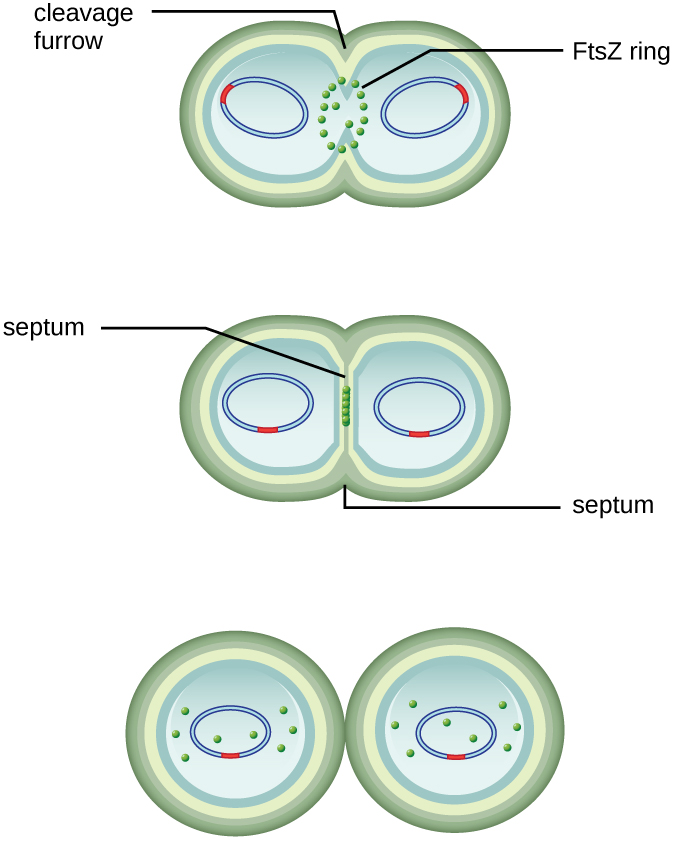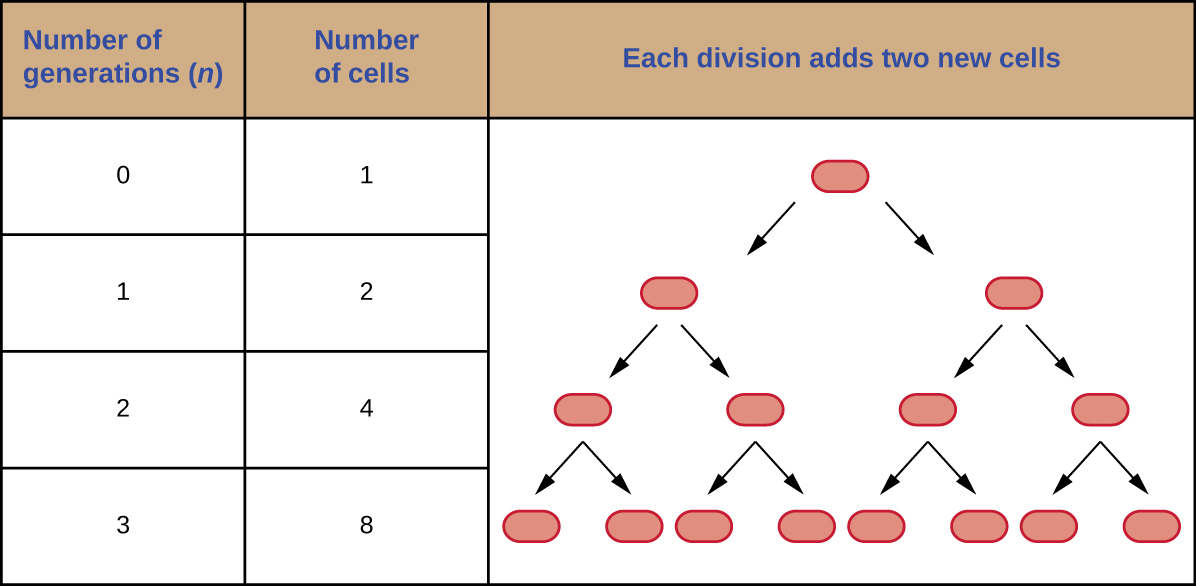| << Chapter < Page | Chapter >> Page > |


In eukaryotic organisms, the generation time is the time between the same points of the life cycle in two successive generations. For example, the typical generation time for the human population is 25 years. This definition is not practical for bacteria, which may reproduce rapidly or remain dormant for thousands of years. In prokaryotes (Bacteria and Archaea), the generation time is also called the doubling time and is defined as the time it takes for the population to double through one round of binary fission. Bacterial doubling times vary enormously. Whereas Escherichia coli can double in as little as 20 minutes under optimal growth conditions in the laboratory, bacteria of the same species may need several days to double in especially harsh environments. Most pathogens grow rapidly, like E. coli , but there are exceptions. For example, Mycobacterium tuberculosis , the causative agent of tuberculosis, has a generation time of between 15 and 20 hours. On the other hand, M. leprae , which causes Hansen’s disease (leprosy), grows much more slowly, with a doubling time of 14 days.
It is possible to predict the number of cells in a population when they divide by binary fission at a constant rate. As an example, consider what happens if a single cell divides every 30 minutes for 24 hours. The diagram in [link] shows the increase in cell numbers for the first three generations.
The number of cells increases exponentially and can be expressed as 2 n , where n is the number of generations. If cells divide every 30 minutes, after 24 hours, 48 divisions would have taken place. If we apply the formula 2 n , where n is equal to 48, the single cell would give rise to 2 48 or 281,474,976,710,656 cells at 48 generations (24 hours). When dealing with such huge numbers, it is more practical to use scientific notation. Therefore, we express the number of cells as 2.8 × 10 14 cells.
In our example, we used one cell as the initial number of cells. For any number of starting cells, the formula is adapted as follows:
N n is the number of cells at any generation n , N 0 is the initial number of cells, and n is the number of generations.


Notification Switch
Would you like to follow the 'Microbiology' conversation and receive update notifications?